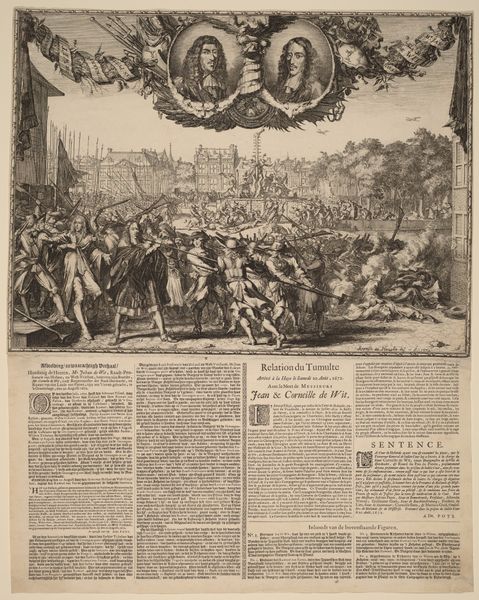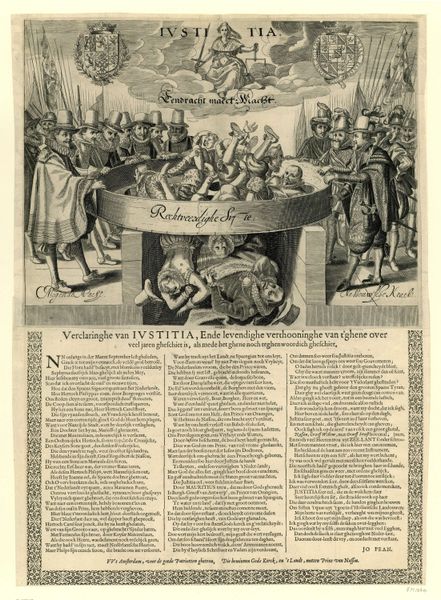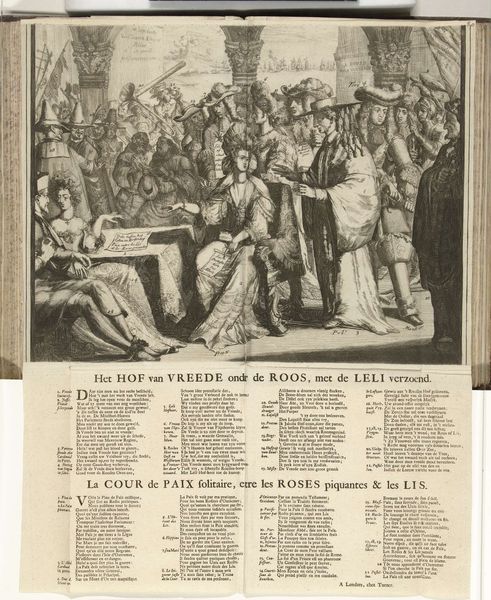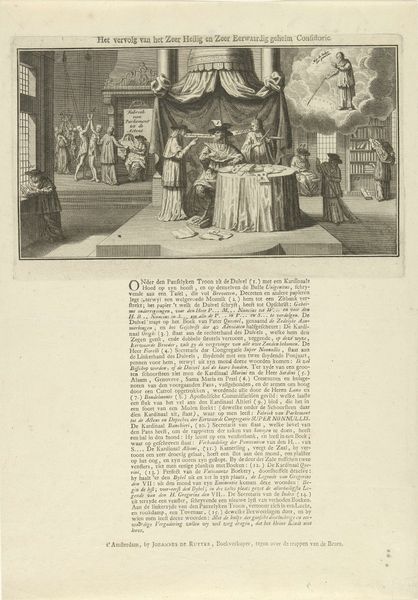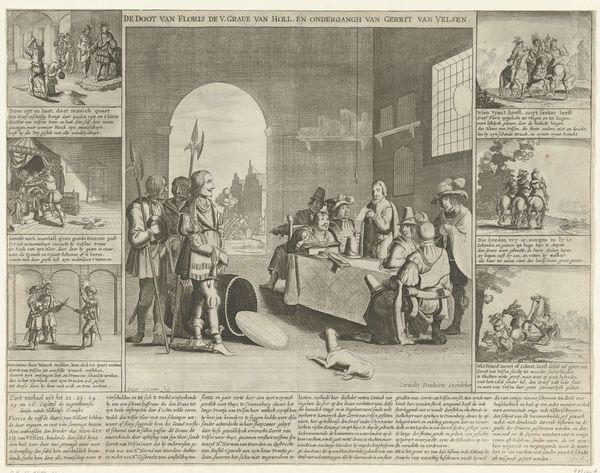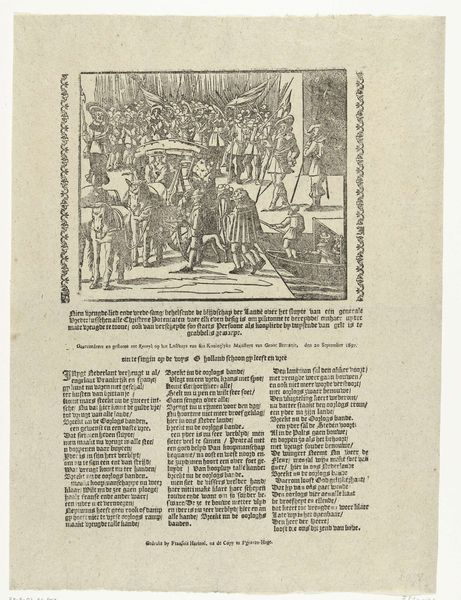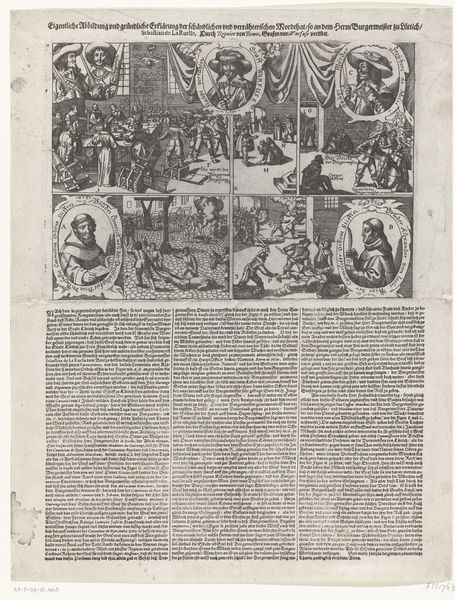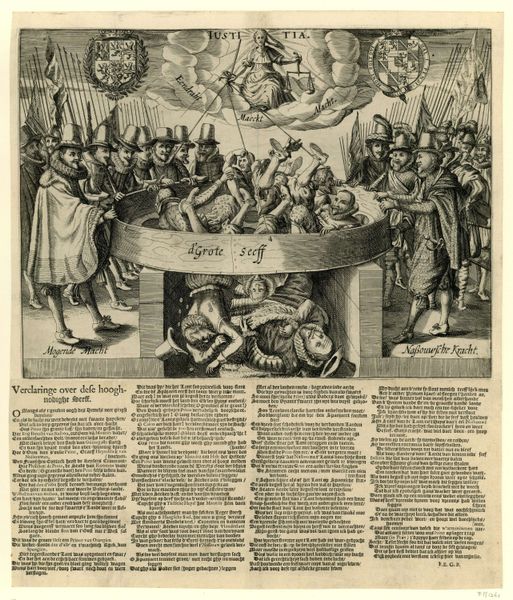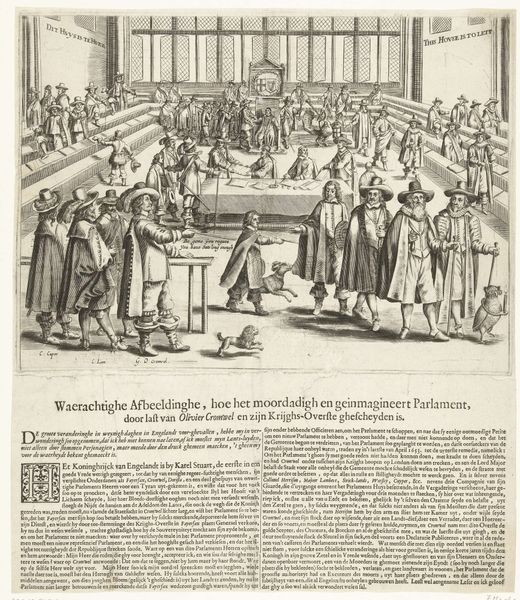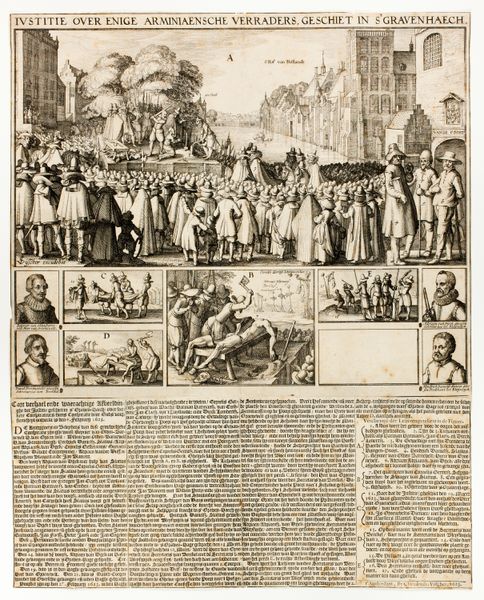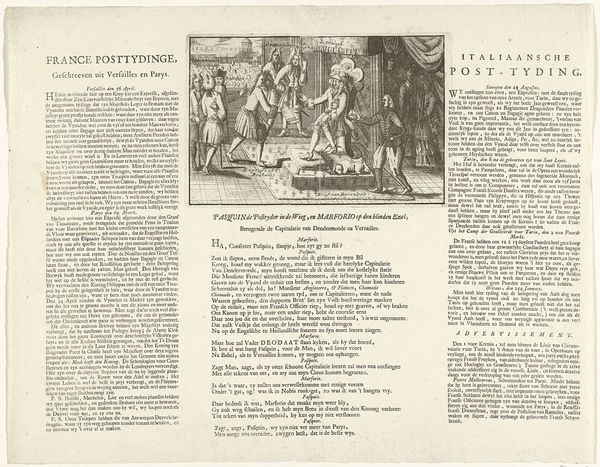
Willem III legt de eed af als kapitein-generaal van de Nederlandse krijgsmacht, 1672 1672
0:00
0:00
romeyndehooghe
Rijksmuseum
print, engraving
#
portrait
#
baroque
#
dutch-golden-age
# print
#
figuration
#
history-painting
#
engraving
Dimensions: height 521 mm, width 374 mm
Copyright: Rijks Museum: Open Domain
Curator: Romeyn de Hooghe created this engraving in 1672, depicting Willem III taking his oath as Captain-General of the Dutch armed forces. It's currently held at the Rijksmuseum. Editor: It strikes me as meticulously detailed. It almost feels overloaded, but that's also part of its intensity and persuasive effect as propaganda. Curator: Absolutely. The process of creating such a detailed engraving – the tooling, the labour – speaks volumes about the commitment to crafting a powerful political image. The artist, de Hooghe, was known for his prints serving as political commentary. It underscores the means through which narratives were produced and consumed during this period. Editor: Precisely. Consider the historical context: 1672, the "disaster year" for the Dutch Republic. This image becomes a rallying cry, projecting strength at a time of immense vulnerability. Willem’s role is staged within this heavily gendered landscape of political power and ambition. We’re seeing constructed masculinity wielded as an emblem of Dutch resilience. Curator: The materiality of printmaking further informs this. This wasn’t a unique art object accessible only to an elite few, like painting could be; engravings allowed for relatively wide distribution and reproduction, amplifying its propagandistic impact on a much broader scale. It’s accessible and reproducible, a kind of early form of mass media. Editor: Exactly, and by choosing the narrative of an oath taking, de Hooghe subtly yet firmly entrenches William’s legitimacy within the viewer’s imagination, attempting to quell contemporary questions regarding succession, privilege, and rank. The social function is unavoidable here: shoring up the regime via art. Curator: Looking closer, you can appreciate the labor involved. These were produced in workshops using specialized tools. Understanding the economic conditions of artistic production is vital, revealing the intricate link between the material, the political and cultural output. Editor: A close examination opens to so many further avenues for exploration related to gender, power, and the complexities of identity – specifically of Dutch identity at this volatile moment in its early construction. Curator: Well, by considering both the materials and the historical background of this piece, we’ve unearthed new ways to contemplate the art's lasting impressions. Editor: Yes, and revealed how historical objects become powerful vehicles for examining the formation, negotiation, and display of intersectional political projects.
Comments
No comments
Be the first to comment and join the conversation on the ultimate creative platform.
